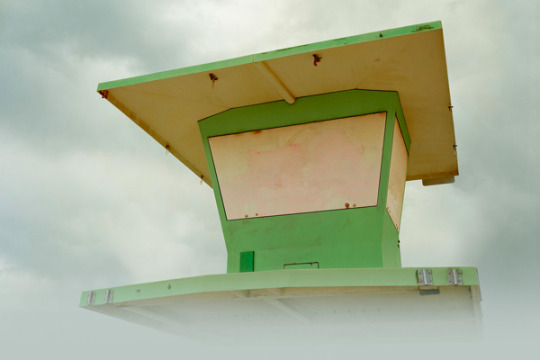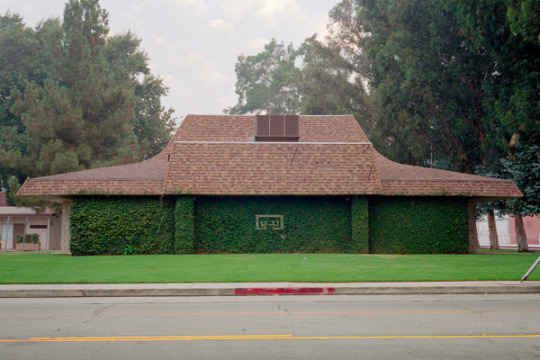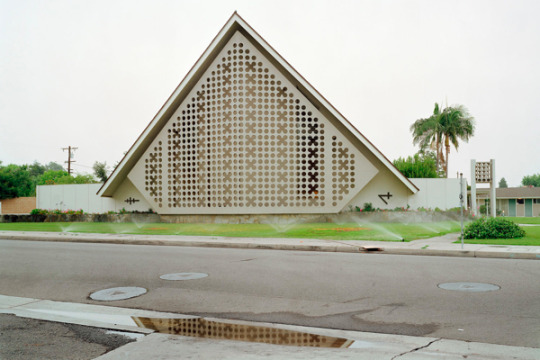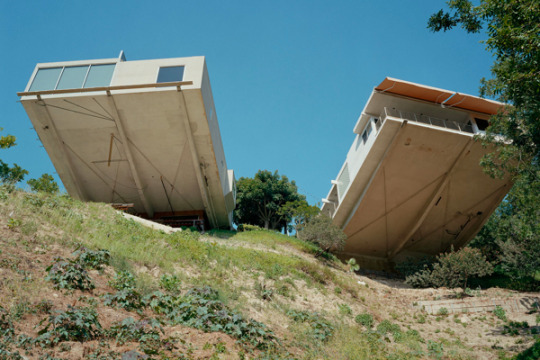Interview: Amir Zaki
The artist Amir Zaki was so kind to sit and chat about his hybrid photography, inspirations, new work, architecture and more.

Could you give us a quick overview of who you are, what you’re doing, and where you are right now in life, work etc?
I’m a person who tends to over-think interview questions that are vague or overarching, and then I freeze up and can’t answer them. In terms of my professional biography, I will refer to this: http://amirzaki.artcodeinc.com/pages/biography/
On your profile you mention creation of “Hybrid Photography” - could you through this work? Is this is a masquerade? We’re curious to know how and what this term means to you? What techniques do you employ in the creation of “hybrid photographs?
My use of the term ‘hybrid’ as it relates to photography has to do with creating photographs that are made up of more than one photograph, sometimes many, using a combination of analog and digital technologies. I also use the term hybrid as a way to describe the combination of elements of documentary reality and artificiality. I guess that masquerade is an adequate word, although it’s not one I would choose. When I think of masquerading, I think that the intent is to fool someone. My intention is not to fool the viewer, but to present assertions that lead to questions about the nature of the veracity of the images I’m presenting.

How do you create?
Whether I am working with photography, video, and recently, 3D modeling and rendering, my working methodology is a slow process of experimentation and discovery, and I would say this process itself is the most rewarding aspect of being an artist. (The finalized and refined objects that are exhibited are simply public, arbitrary markers in time of where I happen to be in my practice at that particular moment.) I generally start off with an idea that is probably bad, make a ton of iterations and mistakes, and edit a lot. At some point during this process, I get this notion that I know what I’m doing, and then I continue to focus and refine in that direction until I believe I’ve completely flushed the idea out and hopefully stopped short of redundancy. Usually this is a two-year process or more for a body of work.

You mention a desire not to both appear to be documenting but also contributing to the "So. Cal Visual Mythology” - what are some of the ways you alter your photographs to create a new mythology? Is your work about curation of visual elements or something else? How do you add to the associations of people with So Cal?
Do you feel that your photographs and work contribute to the extension of the mythology (IE in adding elements to the visual library of associations with so-cal even with your false works? Why are you attracted to this mythology? Why do you refer to it as a mythology?
Yes, it’s my hope that my photographs are added to the cultural catalog of mythological imagery of the Southern California landscape. The reason I refer this shared cultural catalog as a mythology is that it is depicted in so many movies and in the media, and is a part of so many people’s vocabulary, many of whom have never even been to California, that the fictive or half-true representation of the area supersedes the reality. I find that a really interesting and unique quality of the city. I am also interested in the idea of mythology as in a story that is still unfolding and can take many directions, like a ‘choose your own adventure’ story. The city of Los Angeles is so young compared to many other real cosmopolitan cities that it’s like a newborn baby. One doesn’t know which parent it’s going to look like yet.

How do you see the role of architecture influencing your work? Are your manipulations an attempt to create an false world, a masquerade, an ideal ? Something else?
Architecture has been a focus in my work for many years. I am not particularly learned in architectural history, or as an architectural photographer. I think in some ways, this has been to my advantage. Perhaps, when I look at the built landscape and think about how I want to photograph it, I have less baggage than other more professionals or academics in the field. This is not to be misunderstood as an excuse to be ignorant of architectural history. I certainly learn more and more about ‘Architecture’ with a capital ‘A’ as time passes and I’m thankful and receptive to this knowledge. However, my interest in architecture is somewhat perverse and unconventional. I like to focus on the potential failure and peculiarities of structures, rather than find the perfect light and lens combination as a way to idealize them, which in turn idealizes or idolizes the architect. Many of my photographs depict buildings as precarious in their relationship to the ground. So, your question asks if I’m trying to idealize the structures I photograph. This depends upon which model of idealism you are referring. The buildings I photograph are certainly not idealized in terms of structural integrity or architectural purity. They may be idealized, however, in terms of architecture as sculpture, where arresting and provocative form trumps usability and style.
How do you relate architectural photography? Could an architectural photographer learn from your work?
Although I briefly addressed this in the last question, I will elaborate with a story. In 2005, Joseph Grima from DOMUS magazine commissioned me to photograph the Walker Art Center when the new section by Herzog and de Meuron was complete. DOMUS is an internationally renowned architectural magazine with a very long and serious history. They work with all the top architectural photographers. Yet for some odd reason, they approached me, based on seeing my ‘Spring Through Winter’ series that I had exhibited at the Mak Center Schindler House. They were interested in my approach, precisely because I was NOT an architectural photographer. So, when I arrived in Minneapolis to do the project, there were several other real ‘pros’ there (presumably working for other publications) with their teams of assistants. I was there solo, sheepishly wandering around trying to make interesting images with my amateur and antiquated equipment. There were several awkward moments when two or more of us would want to photograph from the same or similar location. That’s always when I would go find somewhere else to photograph that wasn’t so obvious. At one point, one of the other photographers yelled at me to get out of his way from across the street. It was really an intimidating experience. The small world of ‘real’ architectural photographers seems highly ego driven and conservative to me. Needless to say, DOMUS published twenty or more of my photographs including the cover of the magazine. They subsequently reproduced a portfolio of my ‘Spring Through Winter’ series, and my ‘Relics’ series, as well as the cover of the magazine once more. Go figure. So, to answer your question, here is what an architectural photographer can learn this from me: Fire your assistants, sell your fancy equipment for a 1950’s Speed Graphic camera with NO ability for architectural lens ‘correction’, and stop yelling at other photographers who are in your way! It’s bad form. (That’s the one and only commission I’ve ever done photographing architecture).

What is your fantasy for architecture ? What do you want buildings and architecture to do?
To answer your first question, I don’t really think about that. I like working with what exists and making it mine. If architecture looked or functioned like my photographs do, I’d have nothing to do as an artist. To address your second question, as an artist using photography, a medium of inherent flatness, I am highly interested in the surface and transformation of three-dimensionality to two-dimensionality of the scene I’m photographing. I’m not particularly thinking about the functionality of real architecture. I do, however, like to think about potential dysfunctionality with regard to the kinds of structures I create and depict.
What is your connection with nature and it’s elements, and how do you channel that into your work?
I have no idea how to answer this. I’m assuming you are positioning ‘nature’ in opposition or in distinction with the built landscape…If so, I don’t make that distinction. The built landscape is our nature. The philosopher Slavoj Zizek has some smart things to say about a contemporary view of nature, but I’m not the best person to articulate those, nor is this the forum. I will simply name drop and point toward him.
What’s with the mist/fog in your photos?
You are referring to the most recent body of work entitled ‘Relics’. For the first time, I allowed myself to fully indulge in two basic elements of the photographs: The lifeguard tower as a sculptural object, and the sky as a backdrop. Given this, I explored color, form and atmosphere in relationship to one another. So a couple of the images in the series depict mist and fog because those phenomena seemed like good candidates for exploring qualities of the atmosphere. If pressed about mist/fog in particular, I also like the idea of obscurity and clarity playing off of one another. Experiencing fog consists of moments of clarity appearing out of utter obscurity, like when an idea you couldn’t wrap your head around finally makes sense. There is this interest in yin/yang ideas or dualities that percolate throughout a good deal of my work.

How do you respond to a urban setting?
I’ve photographed in very urban settings in the past. Around 2000, I was photographing at night from relatively high vantage points in and around Los Angeles. The series was called ‘Photographs From’. Ultimately, I feel like the visual information in urban settings is used up. Or, less cynically, I haven’t been able to make it work for me very well since then. I find it more of a rewarding challenge to make something interesting out of the bleakness of the landscape that lies outside of urbanity.
What are you currently working on?
How to reduce anxiety in my life. In terms of my art practice, I try not to prematurely describe my work in words until it exists as visual information. It’s futile and disappointing for all parties. Once it’s finished, I’m happy to talk about it.
What other artists inspire you?
Artists who explore diverse ideas, take risks, and make work that evolves in meaningful ways throughout their careers and lives, despite trends and market pressure. Essentially, qualities of integrity and ambition inspire me. On the other hand, when it looks like an artist has been working on the same or similar idea for thirty years, and they are rewarded externally for it, it’s hard not to be a little discouraged or demoralized. The art world often rewards consistency and recognizability, which is one of the most peculiar and counterintuitive paradigms, given that creating art is, at its core, about discovery and evolution of ideas and visual information. It’s difficult to prioritize experimentation and discovery when there is a great deal of external pressure to be consistent in one’s approach. It’s actually absurd.
Something you are still learning?
I incessantly listen to philosophy podcasts. There isn’t anything that I’m NOT still learning.